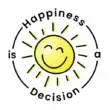We live in a world that runs on speed. Emails ping before we’ve even finished typing a reply, traffic roars while we sit in gridlock, and scrolling on our phones feels like a competitive sport. Somewhere in the rush, we’ve been tricked into believing that faster always means better. But deep down, most of us know it doesn’t.
Slow living isn’t about giving up ambition or moving to a cabin in the woods. It’s about choosing presence over pace. It’s reclaiming our right to breathe, savour, and live deliberately instead of being swept along by the noise of the world.
Why Slow Living Matters
When we slow down, life stops feeling like a blur. We notice the way sunlight falls across the kitchen bench, the flavour of food we’re eating, the laugh of a child, the satisfaction of finishing a task without rushing. Science agrees with what our souls already know: slowing down reduces stress, improves mental health, and actually makes us more productive in the long run.
“Real luxury is not working like a maniac to take an expensive vacation—it is living a life you enjoy every day,” by Kathy Gottberg
It turns out slow living isn’t just a romantic idea — research backs it up. Habits like sleep, kindness, and strong friendships all boost happiness more than chasing the next shiny upgrade. I broke this down in The Science of Happiness.
Slowing down also means making space to see life as it is, without forcing everything into a “good vibes only” box. I wrote more about that in Happiness Is Not Positive Thinking.
Small Ways to Practise Slow Living
You don’t need a radical lifestyle overhaul to begin. Start small:
- Morning rituals without your phone. Stretch, journal, or enjoy a quiet coffee before letting the world in.
- Single-tasking. Do one thing at a time. Cooking, writing, even folding laundry—give it your full attention.
- Nature time. Walk without earbuds. Let birdsong and breeze be your soundtrack. Practice being present in the moment.
- Mealtimes as pauses. Eat slowly, taste every bite, share conversation instead of screens.
- Start a daily gratitude practice. Make some time each day to think about or even list in a journal things you love and appreciate.
These aren’t glamorous or Instagram-worthy hacks. They’re simple, timeless practices that shift how you feel day to day.
One of the simplest ways to slow down is to step outside. Time in nature has a way of resetting us, reminding us that life doesn’t have to run at full speed all the time — as I explored in this article about nature as the original antidepressant.
The Hidden Joy of Saying “No”
Slow living often means saying no—to over-scheduling, to unnecessary commitments, to the pressure of always being available. Each “no” creates space for the “yes” that truly matters: yes to rest, yes to meaningful work, yes to connection with people you love.
For many of us, rushing becomes a way of coping with someone else’s chaos. Choosing slow living can be one of the first steps in reclaiming peace, especially if you love someone who struggles with addiction — something I wrote about here.
A Fast World Still Needs Dreamers
Choosing slow doesn’t mean opting out of modern life. It’s about being awake in it. The world will keep spinning fast, but you don’t have to spin with it. In the pauses, you rediscover joy. And joy, in the end, is what makes a life feel full.
If you’re curious about adding more calm and clarity into your days, explore more articles on Happiness Is a Decision. Start your own slow-living experiment—you may be surprised at the joy waiting in the spaces between the rush.
This post is part of my Slow Living & Presence series.
Explore more in the series:
- Presence
- How to Start a Gratitude Practice
- Nature: The Original Antidepressant
- The Science of Happiness
- Happiness Is Not Positive Thinking
- Breaking Big Goals Into Small Steps: The Key to Actually Achieving Them - November 4, 2025
- Accountability and Reflection: The Secret Sauce of Goal Achievement - October 28, 2025
- How to Find Your Core Values (and Why They Matter for Goal Setting) - October 14, 2025




